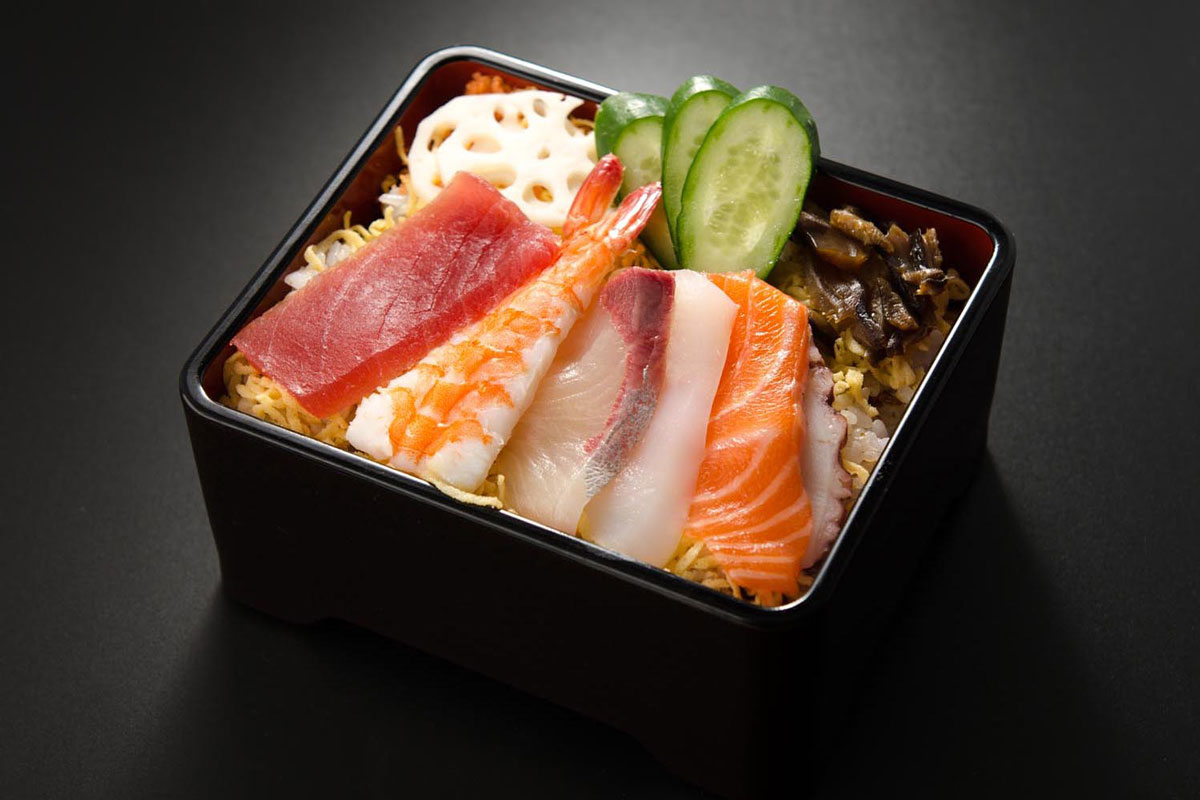

CHIRASHI-ZUSHI, OR A BOWL FULL OF FISH AND RICE
Chirashi-zushi – what is it?
Chirashi-zushi (散らし寿司) is a traditional Japanese dish. It literally means ‘scattered sushi,’ which is a perfect description. The bowl of rice and various fish, sprinkled over with ingredients typical of the Far East, tastes basically like sushi. The difference is that the taste changes with every bite. Chirashi-zushi is also a term used for sushi served without rolling. It is a perfect solution for those who desire a custom-made dish that matches their individual culinary preferences.
Chirashi-zushi – quick sushi
Not all restaurants specialising in the cuisine of the Far East can satisfy the culinary expectations when it comes to the taste of sushi. If you suddenly feel like having some sushi, you may prepare it by yourself. Rolling seems to be the most time-consuming and challenging activity as it requires proper technique. You can just drop it and prepare chirashi-zushi instead.
Cooking rice is the longest stage of preparing the dish. It takes 10-20 minutes, depending on rice type. Preferably, special sushi rice should be used. It has larger grains and it is stickier, thus giving the dish a typical Japanese texture.
The next step is to prepare rice vinegar with sugar and salt. Heat up the ingredients and stir them thoroughly. Use the resulting marinade to season the rice. The penultimate step is to choose the ingredients, for instance fish, seafood, shiitake mushrooms, tofu, tamagoyaki, wasabi or various fresh vegetables. You can use anything you like. The final stage is to serve the dish. There are two possible variants – Edomae chirashi zushi and Kaisen chirashi-zushi.
Edomae chirashi zushi – how is it served?
Edomae chirashi-zushi (江戸前ちらし寿司) is also called Tokyo-style (江戸前 – Edomae) or Edo-style sushi (江戸前寿司 – Edomae zushi). This variant obviously comes from the Edo period and it has a lot in common with the epoch. It was a time when people were over-worked, impatient and led hectic lives so they had no time to create sophisticated meals. Hence the characteristic arrangement: rice at the bottom of the bowl, and fish slices, seafood, vegetables etc. on top. This style is popular all across Japan as well as in Western restaurants. Nowadays, Edomae chirashi zushi is arranged very carefully, according to a specific sequence.
Kaisen chirashi zushi – how is it served?
Kaisen chirashi-zushi (海鮮ちらし寿司) is the other way to serve chirashi-zushi. Just as in the previous version, you can also use the ingredients of your choice, but fresh seasonal vegetables are the most popular option. Another difference is in serving the dish. The top layer of ingredients is not carefully arranged. On the contrary – Kaisen chirashi-zushi is a complete mixture of rice, vegetables and fish. In some Japanese restaurants it may be served as Kaisen Don (海鮮 丼), which means that regular rice is used instead special sushi rice.
Chirashi-zushi for special occasions
Scattered sushi is often served in Japan during special celebrations, events or festivals. The Doll Festival (雛祭 – hinamatsuri) is held every year on 3 March. It is also the Girls’ Day in Japan. The Japanese celebrate it enthusiastically by drinking sake and enjoying typical dishes, that is akura-mochi (rice cookies with bean filling), adzuki beans and the aromatic chirashi-zushi. Depending on the region, the names include Gomoku Sushi (五 目 寿司), Gomoku Chirashi (五 目 ち ら し) and Bara Sushi (ば ら 寿司).
The universal nature of chirashi-zushi
The greatest advantage of the dish is that it can be individually adapted to every palate. You can even make it vegetarian. Since you can mix ingredients freely, the dish can be easily divided into portions of various flavours. Different ingredients can be added to every bowl. To add variety, you can serve it with soy sauce, white or black sesame seeds or wasabi. The diversity of variants makes it perfect for parties as you can satisfy guests with even the most sophisticated culinary tastes. Be prepared for various preferences by serving several types of chirashi-zsuhi.























